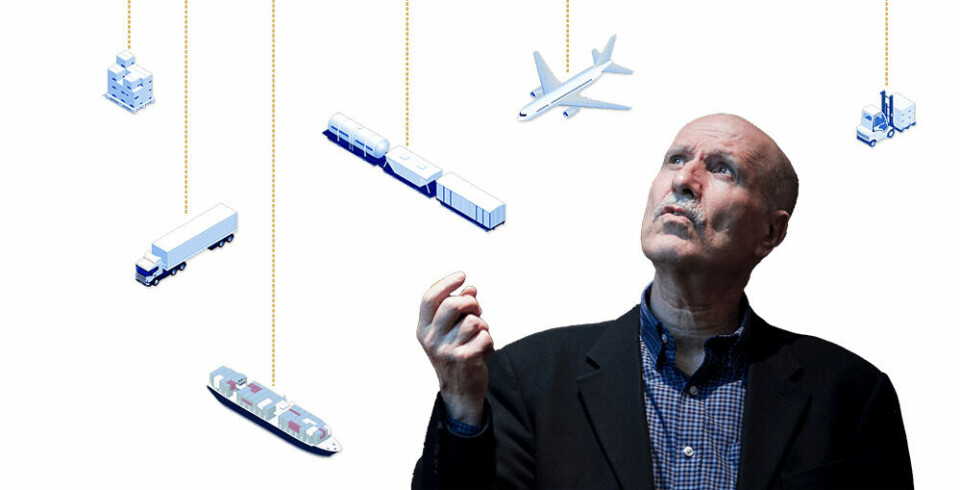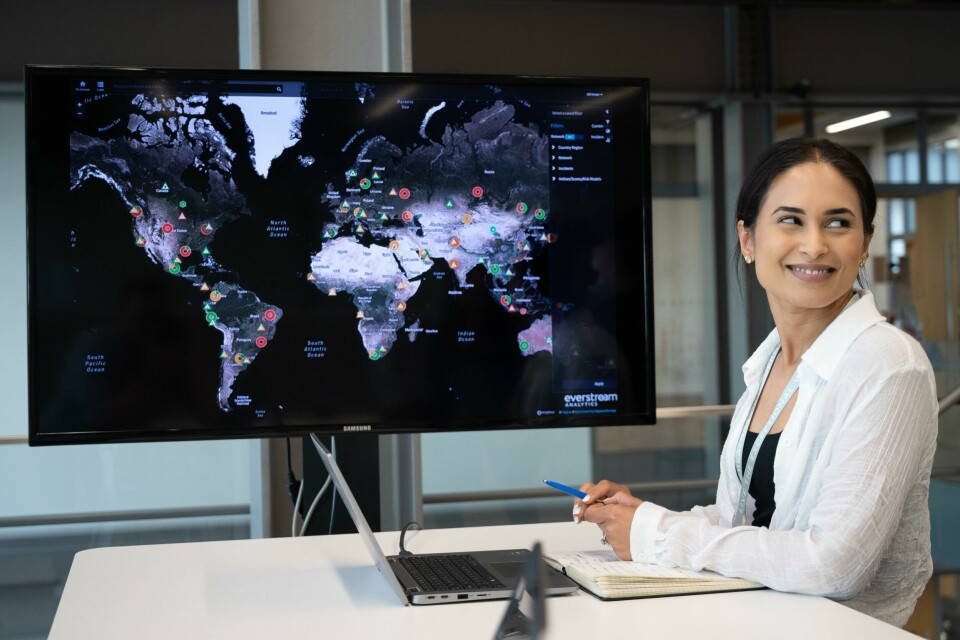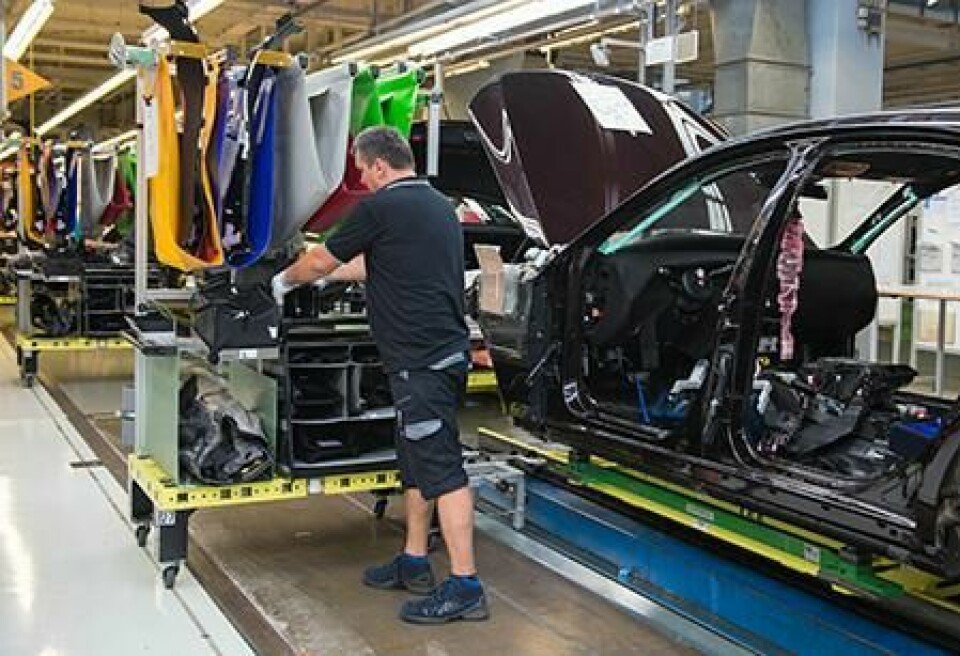Is Artificial Intelligence taking over the supply chain?
Artificial Intelligence (AI) is creeping into many industries, and now it’s coming for the automotive supply chain. Should we be nervous, or should it be embraced as a helpful tool? Yossi Sheffi, professor of Engineering Systems at MIT weighs up the pros and cons.
Public reception to AI has been varied, ranging from enthusiasm for its productivity potential, to terror over its impacts on jobs and even the end of humanity. As it makes its way into the automotive supply chain, there is still uncertainty about whether it should be celebrated or shunned. But Dr Yossi Sheffi, the professor of Engineering Systems and founding director of Supply Chain Management at Massachusetts Institute of Technology (MIT) doesn’t see as many threats from the technology, provided companies use it in the right way. Having just published his ninth book, ‘The Magic Conveyor Belt’, which studies how AI will affect the supply chain as its use grows, he tells Automotive Logistics about the benefits of the technology, and how it can make the industry more competitive.

The advantage of AI in logistics
“There are many applications for AI in the automotive supply chain,” Sheffi says. “AI can do repetitive work very well. It’s automated, it’s accurate and fast, and it works nonstop.”
In the last few years, particularly since the pandemic, more firms throughout the supply chain have been looking to AI for improved efficiency and cost savings. Many were also pushed to implement technology to help with the shortage of workers. OEMs are not only using robotics and other automation tools in their manufacturing, but now they’re increasingly seeking to use them to make faster, smarter decisions in logistics, and have been launching trials and pilot projects. It is hoped that not only will its use cut time and costs but that it will go beyond this to make companies more competitive, productive, and profitable.
Sheffi says: “Everybody is already using AI day to day without realising it. When you call a customer service line for something, you’re more than likely to be talking to a chatbot. AI can listen to your issue, decipher what it is that you are saying, and try to come up with an answer.”
Drawing the parallel to the automotive industry, he adds: “What you do is you get the machine to do the ‘simple’ stuff. In other words, the jobs that can be defined and need to be optimised but are mostly repetitive in nature.”
BMW, for example, has been testing the use of AI in logistics at its Steyr engine factory in Austria since 2019. The carmaker used the software to speed up processes by using an AI-based camera to prevent unnecessary transport on conveyor belts of empty containers. Since then, BMW has implemented AI use across its entire value chain through its Data and AI Initiative, working with US software company NVIDIA on a pilot programme to equip small transport robots (STRs) with AI, and has even producing a code of ethics for its use across the business. Similarly, in 2020, Skoda used the Optikon AI platform to automatically calculate how pallets should be loaded in containers to maximise capacity.
“There are areas, like this, where adoption will be close to immediate,” Sheffi says. “Companies are already putting AI into existing software models. This happens without you even realising it. It’s happening already.”
Just how intelligent can AI be?
With new advancements in the technology every day, the logistics sector is trying to figure out just how clever AI can be, and what else it can help with, aside from repetitive automated tasks. One area with significant potential for the supply chain would be in forecasting, including on customer demand as well and forecasting impacts to production and shipments.
“There are many applications for AI in the supply chain, but people are hoping for it to make forecasting better. A lot of people are using various machine learning techniques for forecasting, which is very important for production scheduling, demand planning, and dealing with suppliers,” says Sheffi. While this is more difficult to do, as the AI depends on learning from the past, there are trials happening to make the technology better at predicting the (almost) unpredictable. The secret lies in the ability of large AI models to integrate data from multiple sources and expressed in numbers, text, video, or voice, and do it very quickly on a massive scale.

JLR is trying to get in on the ground-floor of these developments by partnering with predictive insights firm Everstream Analytics. In June, the carmaker said it would use Everstream’s AI to monitor its supply chain in real-time for potential risks like natural disasters, strikes, data breaches and export issues that could delay or halt shipments. At the time, Barbara Bergmeier, executive director of Industrial Operations, JLR said the AI would help the company to “manage risks before they cause disruption”, making the company more resilient and helping it to deliver on commitments made to clients.
Renault Group has also made strides in using machine learning and AI for logistics management. The carmaker has combined information from its logistics providers and suppliers together with information from the public cloud into a digital control tower to better map and forecast impacts in its supply chain. It has partnered with Google Cloud to run AI applications.
Risk management doesn’t stop with physical disruptions – companies are now hoping to use it to identify financial risks within their supply chains. Sheffi explains how this is advantageous. “Usually, determining potential financial risk with a supplier involves looking at financial reporting, and this is always backward-looking information,” he says. “If you want more current information, you have to try to scrape data from the media, including social media, or anywhere else that would alert you there are problems with the supplier. You can look at whether important executives are leaving, whether companies in their supply chain are complaining about a long overdue payment, or whether suppliers have some failure in a merger or acquisition or problems with their bank. The problem is that this takes time.”
He says that AI can help here as new language models of the technology can scrape data that’s not numerical. “Now you can get information that you couldn’t otherwise get in the same timeframe and on a very large scale” Sheffi says.
Getting down to the money
An unexpected benefit for automakers and logistics firms is the cost, or lack thereof. Automotive firms will undoubtedly want to customise the AI software to suit them. “They want to have their own way of doing this,” Sheffi says. “They want to use their corporate processes, tried and true, and embed it in what the AI does.”
However, because multinational tech companies like Google, Microsoft and other investors are pouring billions into software developers like OpenAI and its ChatGPT platform, the basic code needed already exists, meaning the majority of the cost and the uncertainty of development is taken out of the hands of automotive firms.
Sheffi explains: “Think about it like Microsoft Excel. You can build a table or model on top of a spreadsheet, but the basic mechanics on the spreadsheet already exist. Similarly, using optimisation software, you have packages already that you can specify to deal with the problem at hand. It’s not going to be outrageous in cost because the bulk of the development costs are covered by venture capitalists who are funding all these start-ups and the large companies who are developing the AI. Nobody will be building from scratch.” Furthermore, there companies will be able to sell to many industries while competing vigorously with each other, so over time, the price of using these platforms will decline.
Of course, costs have a way of creeping in no matter what. To be able to take full advantage of AI in the automotive supply chain, money will have to be spent to train staff on how to use it correctly and efficiently. Thankfully, this won’t equal the billions being spent by the tech conglomerates. But it will cost time.
“Now you start to see why it will take a long time,” Sheffi says. “AI will be a useful tool, but it’s the companies that will be able to take the time to train their workforce to use it that will be able to benefit from it. They need to be able to train their people and change processes – integrating humans and machines in an endless workflow – to take advantage of it.”
This process can take a long time, even decades. Sheffi uses the example of Robert Solow, who was an MIT professor when the technology revolution happened. “The revolution started in the 1950s, but in 1987, he said that the computer age was everywhere except for the productivity numbers,” says Sheffi. “Only at the end of the 1990s, the so-called ‘Solow Paradox’ was put to rest when technology, retail, and wholesale accelerated the US productivity. Other sectors joined and productivity start to speed up. The reason for the delays is that it takes a while for people to learn to use new technology, to get comfortable with it, not be afraid of it, and incorporate it into a smooth workflow.”
“Despite the fact AI is developing quickly, it’s not going to be widespread very quickly”
Even if a company can take the time and money needed to train its workforce on the new software, the natural human fear of the unknown can be a blocker to productivity. Sheffi says: “Some people will try to sabotage it because they’re afraid for their jobs, and some unions will be against it. And then there’s government regulation. Major governments in the EU, the US, China, Japan, and South Korea, are all working on regulatory frameworks regarding generative AI. The discussion in the US is about creating an AI agency so that will ensure that the software is safe to use and that AI companies will be held accountable. This will slow down the process of development, and despite the fact AI is developing quickly, it’s not going to be widespread very quickly. At the same time, applications that are vetted and do not threaten jobs are likely to be implemented faster.”
The human factor
While AI has an unknown and largely untapped capacity to make the world of logistics more efficient, it is missing something it can’t learn – humanity. “By their very nature, there are aspects of work and business that people are just much better at than any algorithm,” Sheffi says. Because machine learning works by learning from the past, AI may not be very useful in emergency logistics, so people are still necessary for the supply chain to stay afloat in times of crisis.
“If the context changes and suddenly we’re going into a recession, or there’s a war or pandemic, or some other big change that causes people to change their buying habits, AI can’t understand the bigger picture and will not be accurate in predictions,” he says. “Whereas humans can see and understand the bigger picture and take over. Humans can catch a change much better, because machines are relatively rigid, and base everything on the data they were trained on. If something is not in the past data, it’s not going to be part of the output.”
Sheffi adds: “People have a moral code and do the right thing. People can adapt a lot faster, have the creative drive, and can come up with new ideas and processes. And people have empathy.”
He says that during the pandemic, companies moved tens of thousands of workers and trucks based on a phone call between CEOs who know each other, which is hard to imagine ever being done automatically. “It was based on relationships and empathy,” he said. “Supply chains are made up of people, and they are basically social networks.”

Sheffi thinks that the human aspect of logistics will not be able to be replaced or replicated. He gives an example in the form of Mercedes-Benz’ €730m ($812m) Factory 56 in Sindelfingen, Germany where the OEM makes the S-Class and is working towards zero-emission production. “[Mercedes-Benz] automated everything at first, and then they went back, took out a lot of the automation, and reintroduced more people into the plant. Why? Because the number of options of models on the line was too complicated. They found that people handle that much better than AI.”
And as OEMs like BMW and Renault integrate more AI applications into their control towers, logistis leaders tend to emphasise that key decision making is still made by humans – but that they are given more information faster, and with recommendations. At Renault Group, for example, the carmaker was able to use AI algorithms to understand in a matter of hours how the earthquake in Turkey in February this year would impact its suppliers in the region, helping material controllers to take action to mitigate disruption; that would have previously taken days if not weeks to map out. “This helps us to put power in the hands of the people to make decisions,” said Jean-François Salles, who was vice-president of global supply chain at Renault before taking a new role this past summer, speaking to Automotive Logistics earlier this year.
In the future, he suggested AI would take the next step and automatically take countermeasures, ordering premium freight or calling off material from alternative suppliers, for example.
A tool for the future
AI has the power to save the logistics industry time and money, ensuring smoother tracking and efficiency, but Sheffi doesn’t believe it will replace people – at least not yet. For now, he thinks it may give logistics firms a competitive edge as another tool in the toolbox. “Companies who offer more technological capabilities may get more business, especially from large, sophisticated companies. AI is just another set of tools,” he says. “The social network of the supply chain can be aided and augmented by technology, be it AI, robotics, or otherwise. People are automating warehouses across all industries, and are installing robots like there’s no tomorrow. However, as Amazon was equipping all its warehouses with advanced robots between 2015 and 2020, the company also hired over a million new employees. So, it’s not like the robots are conquering the world. At least not for a long while.”






